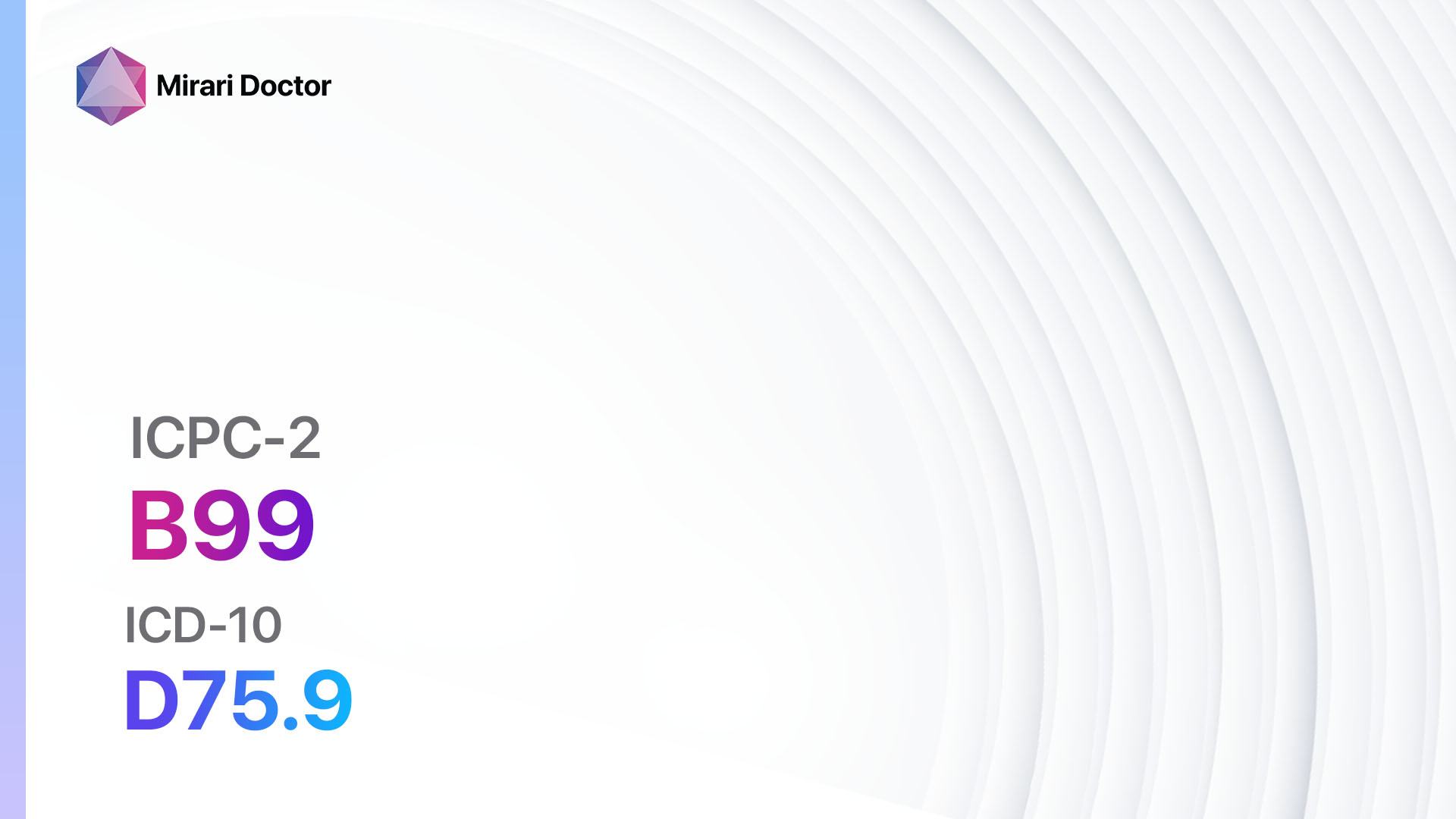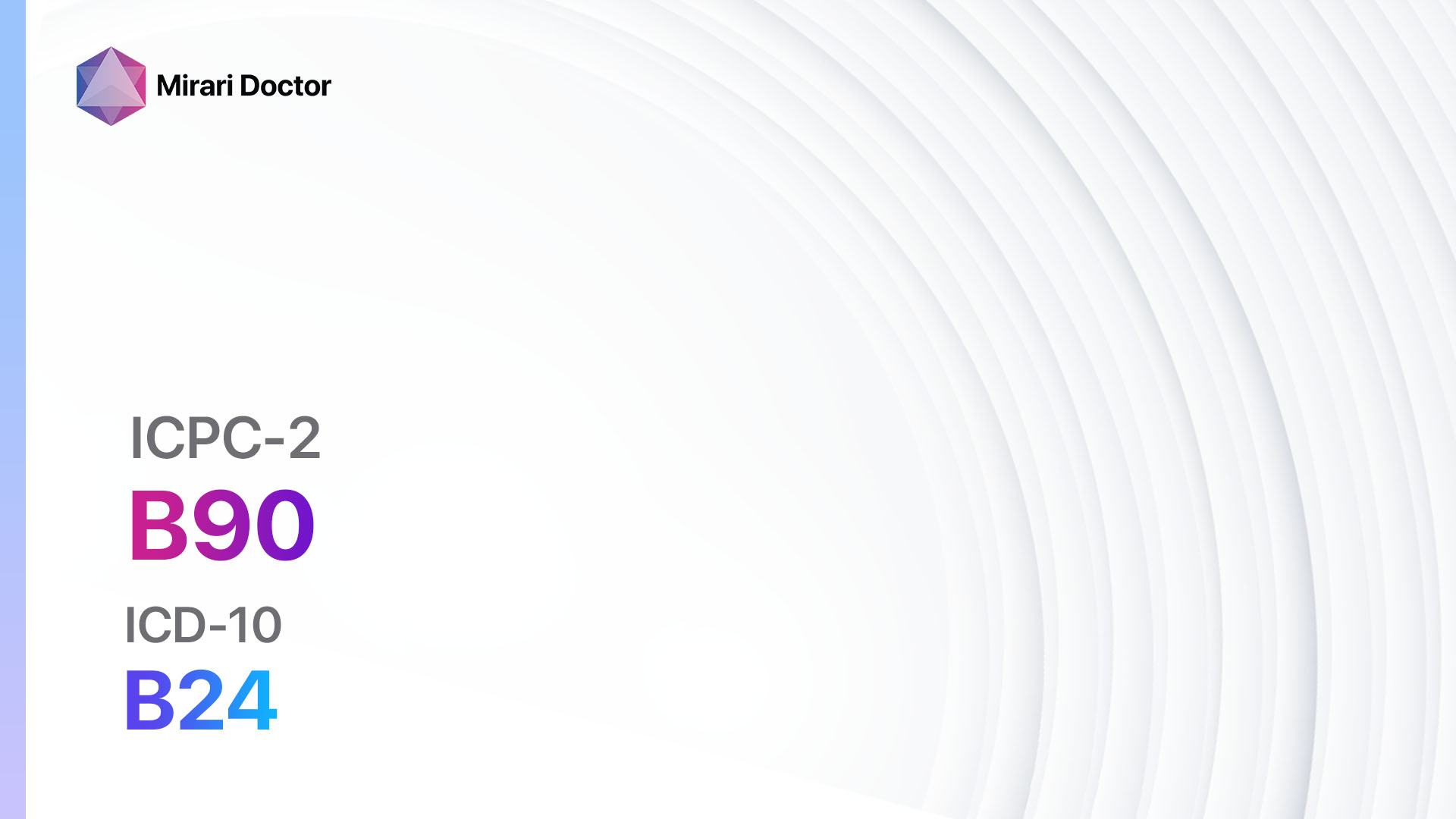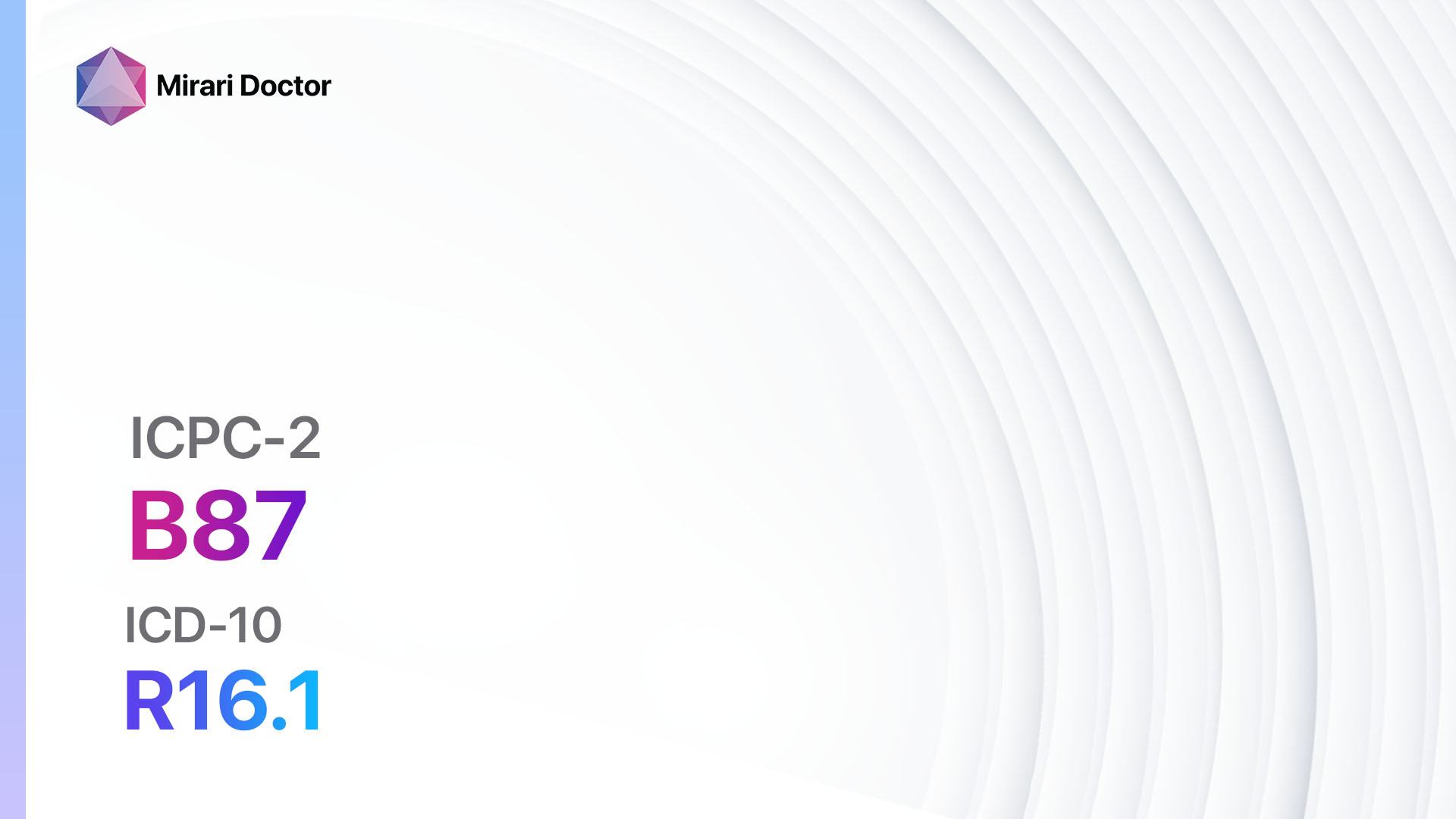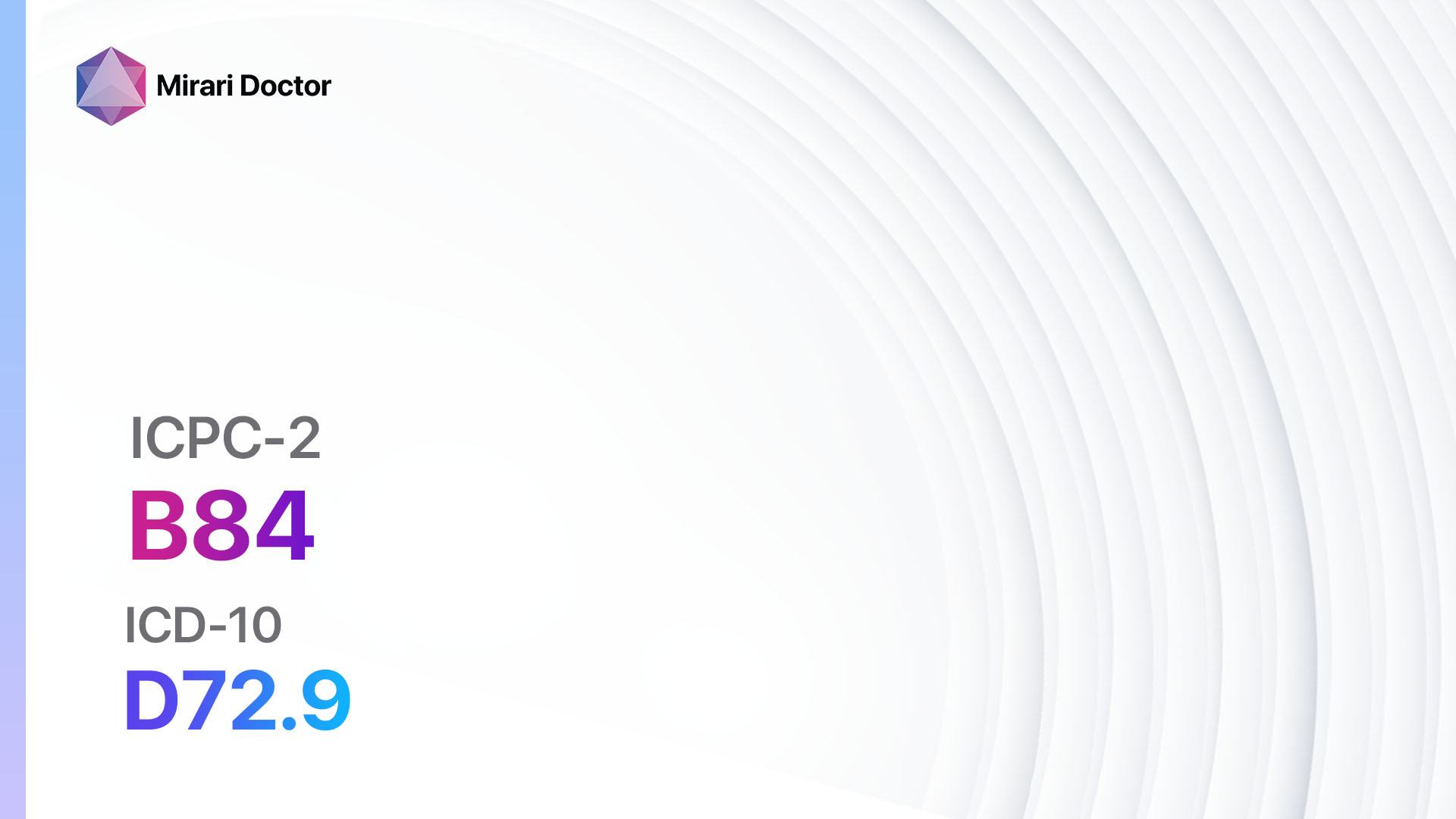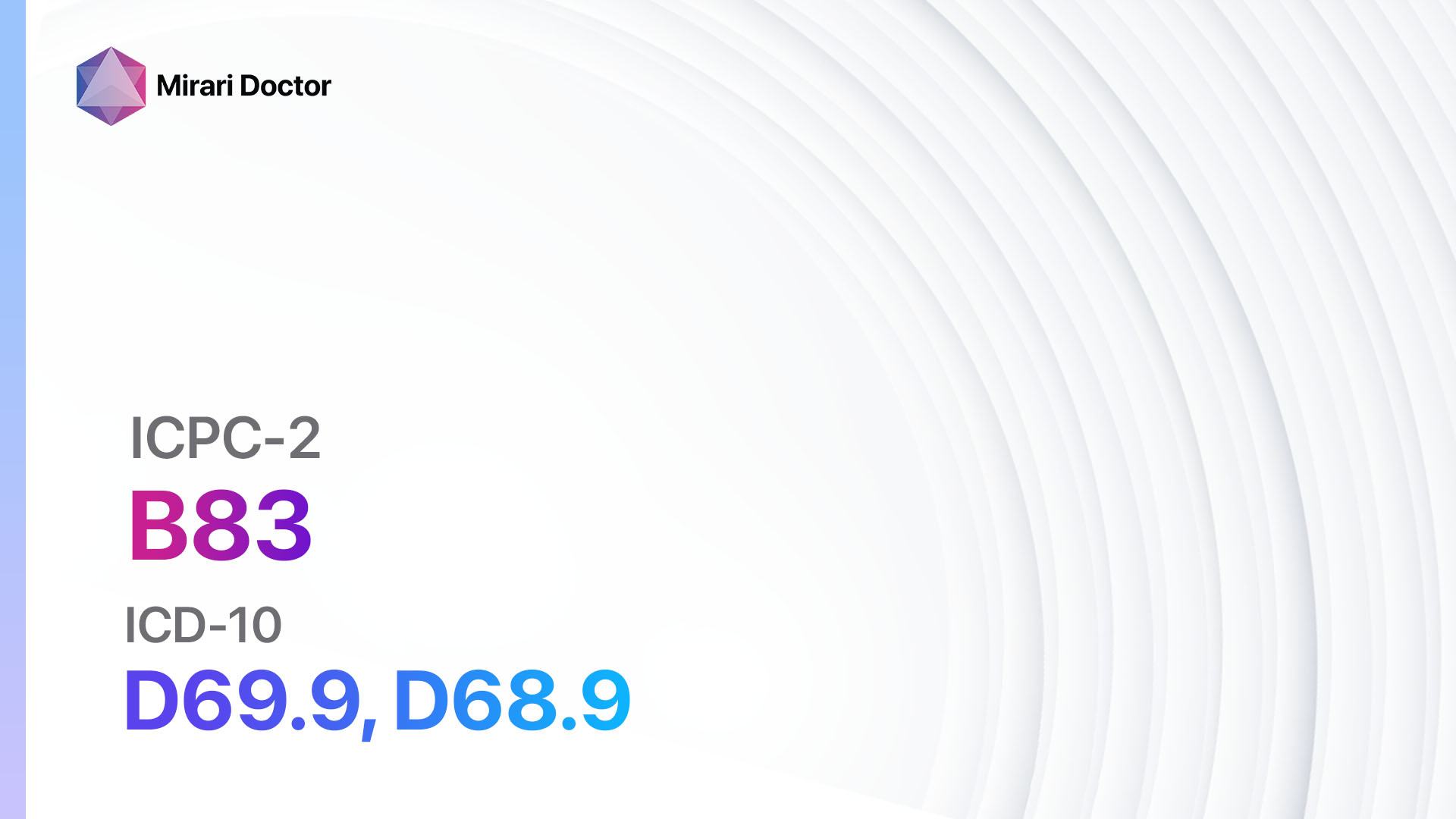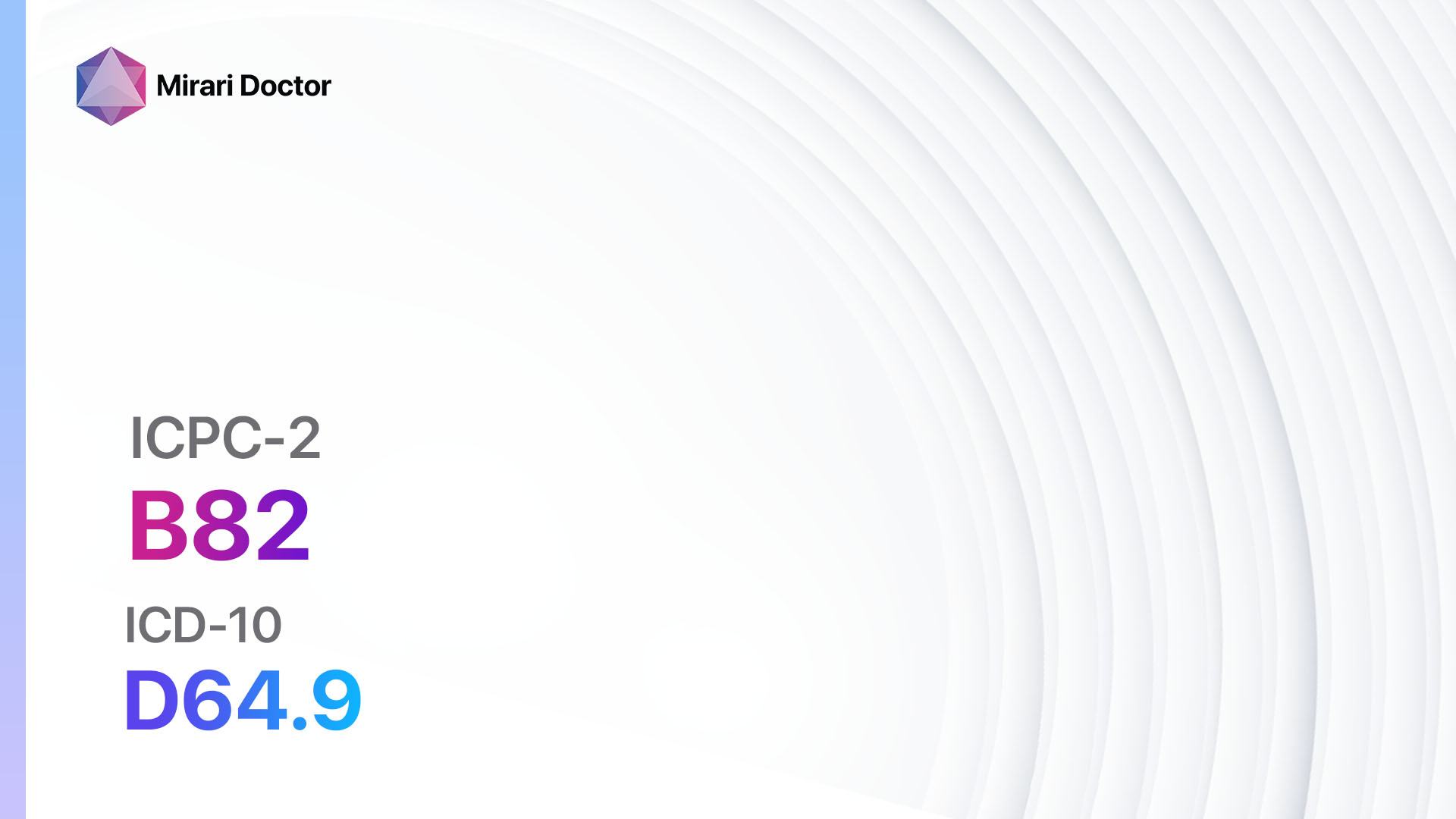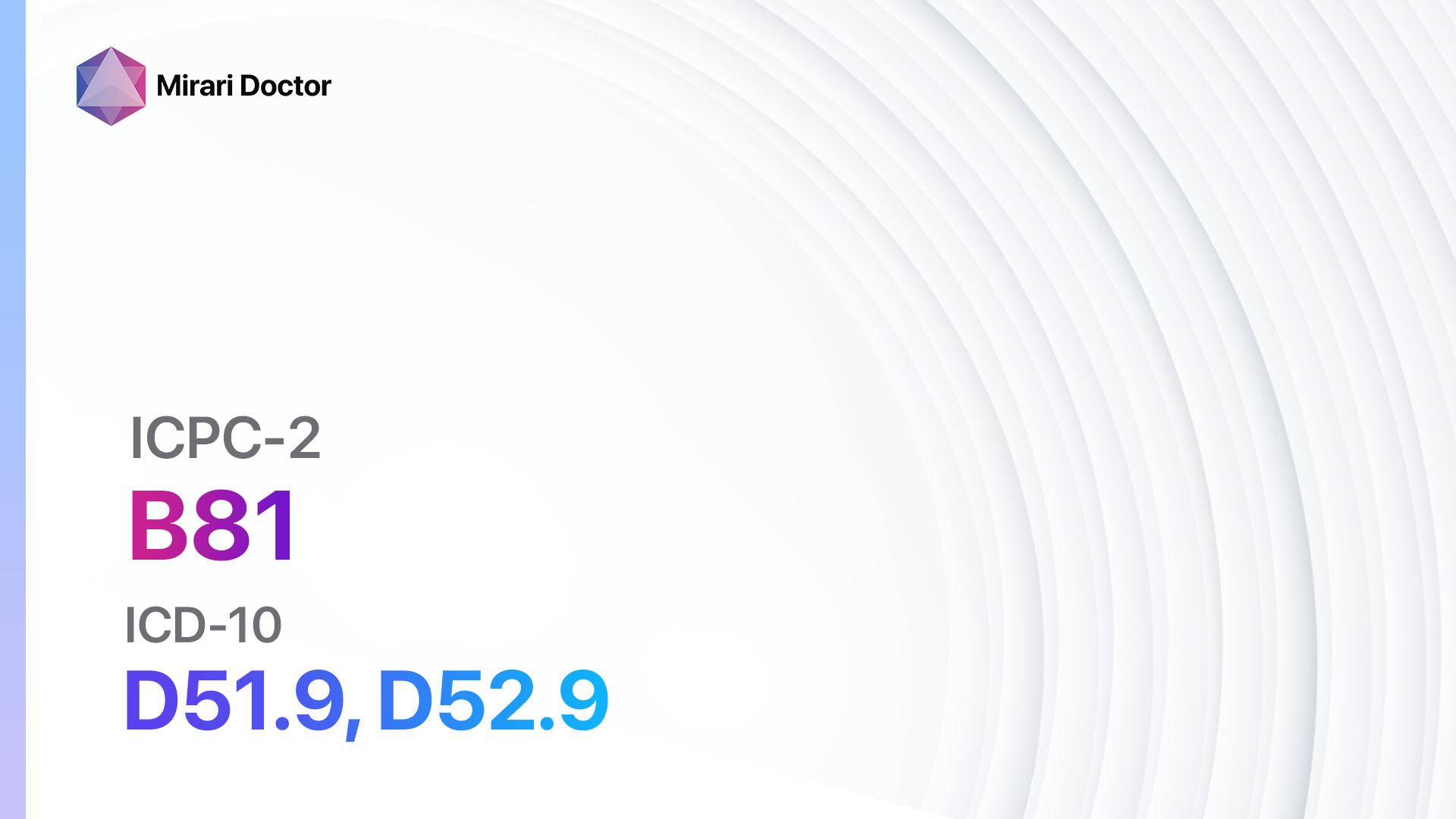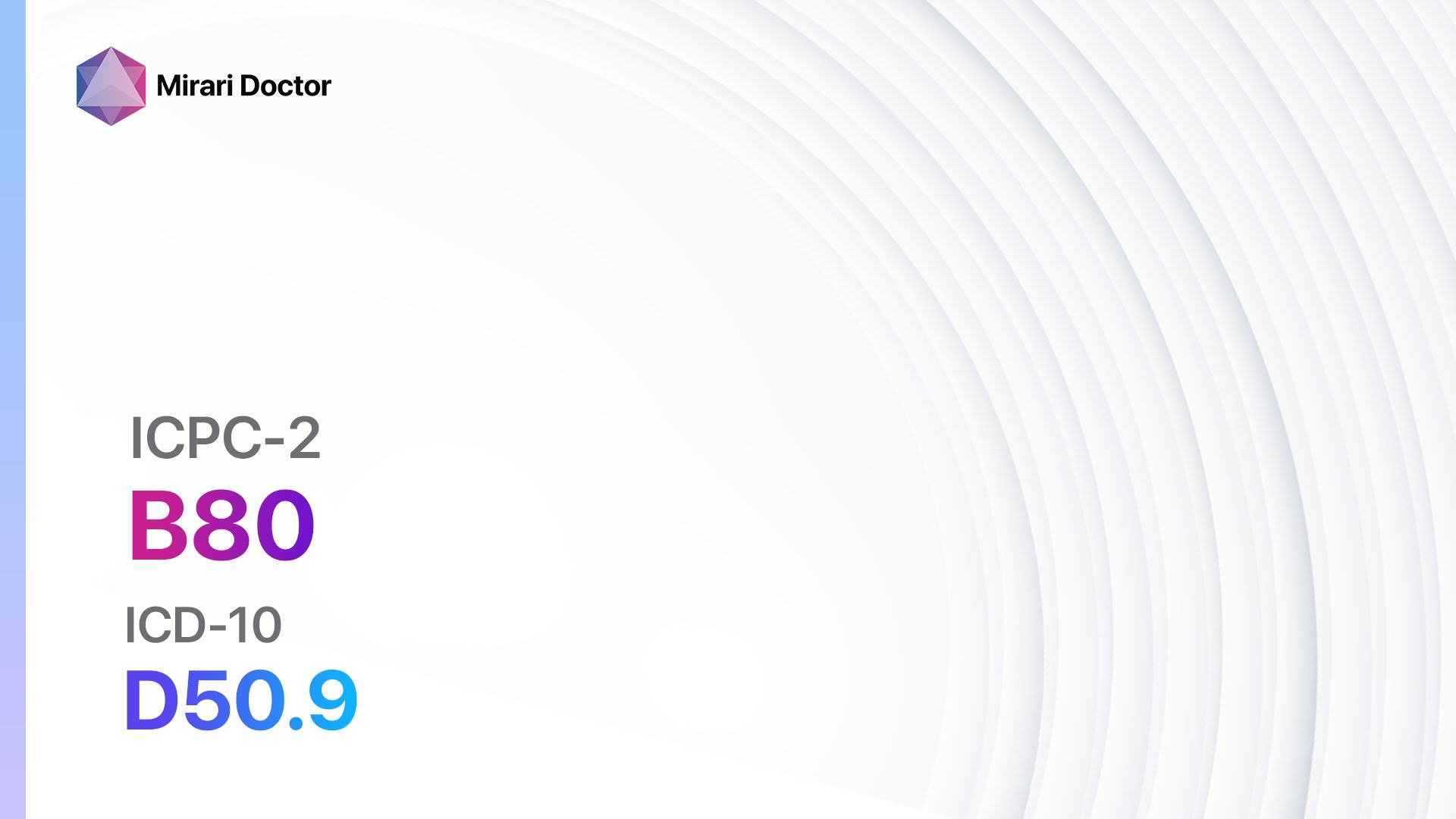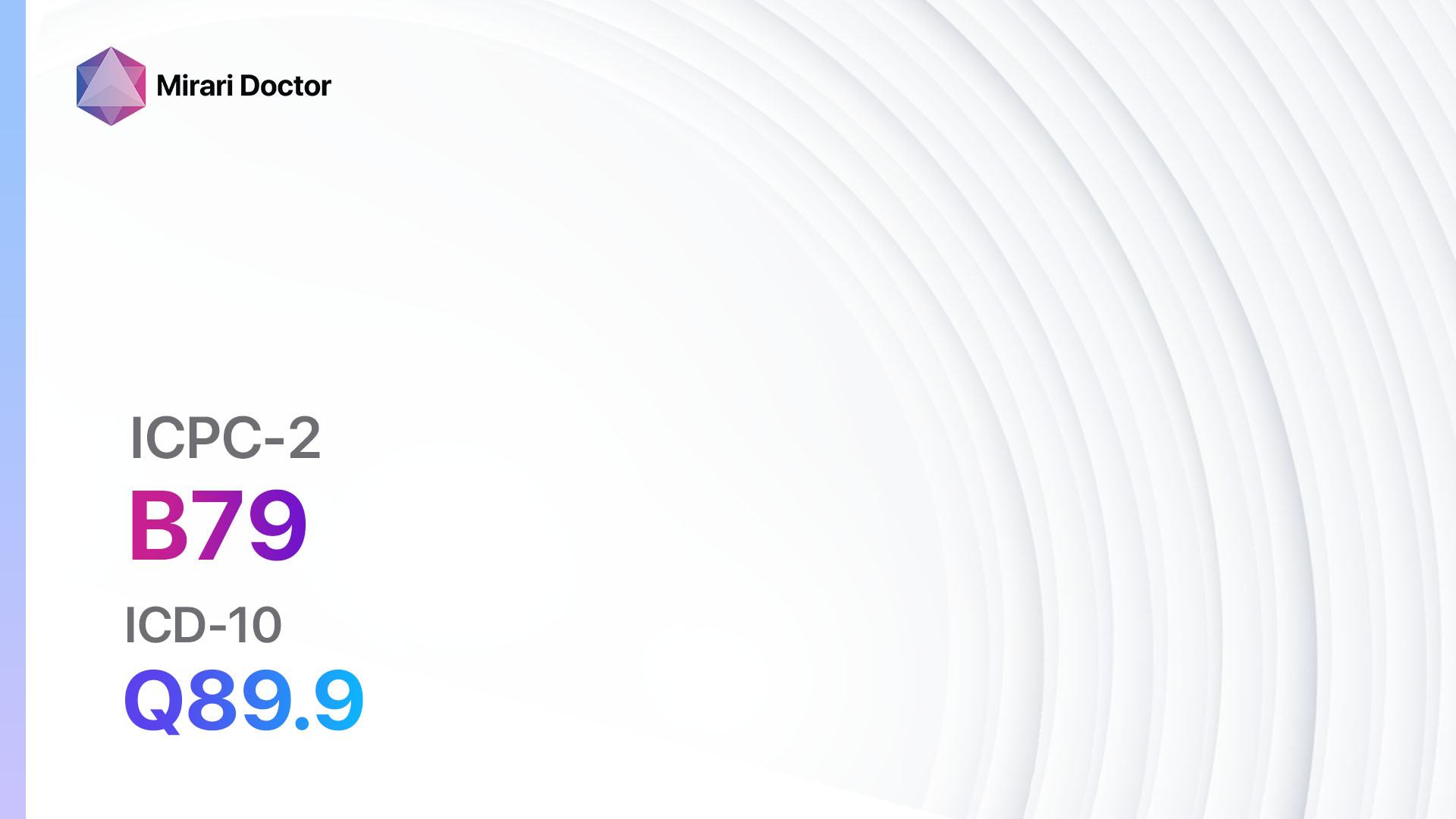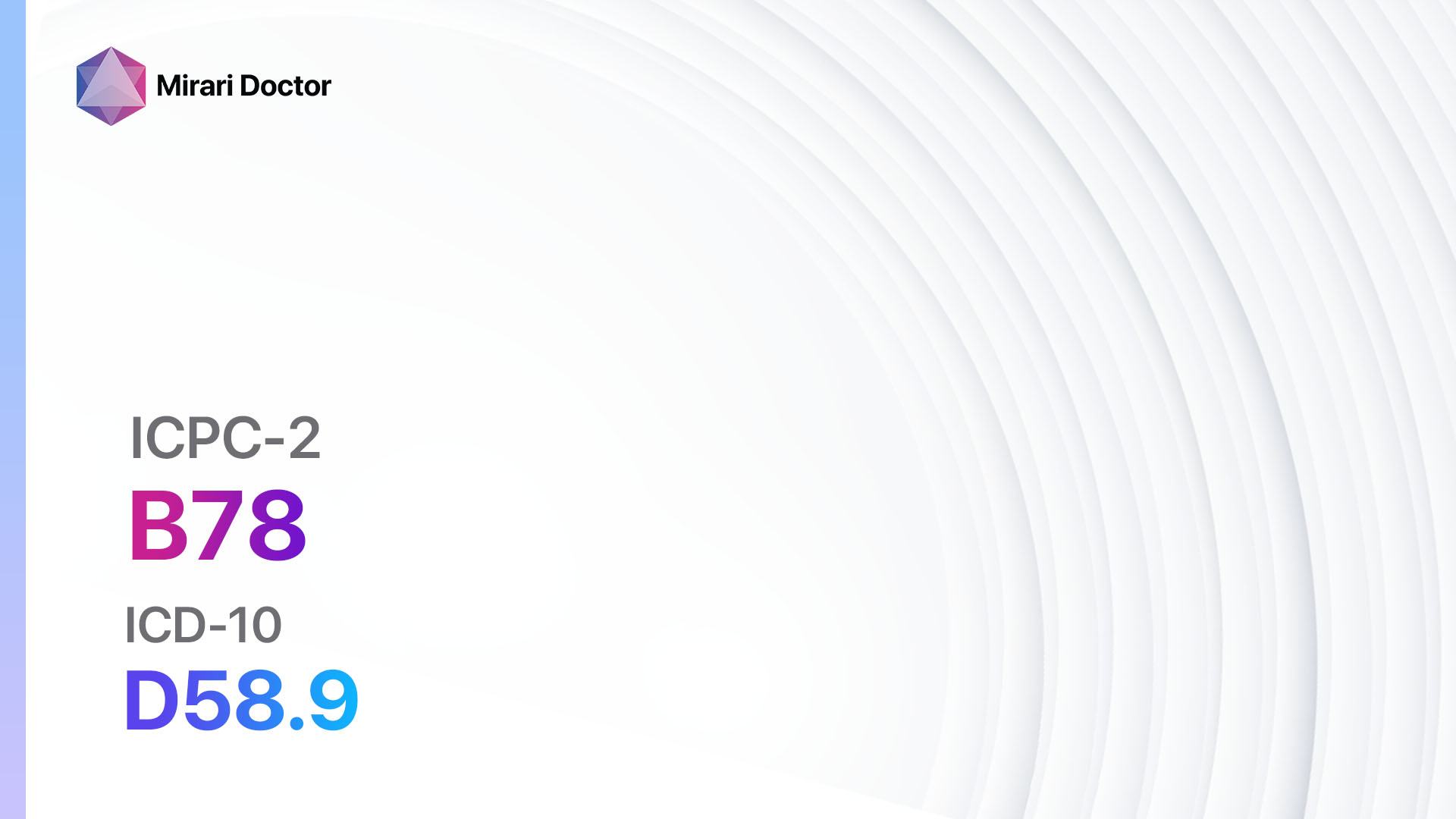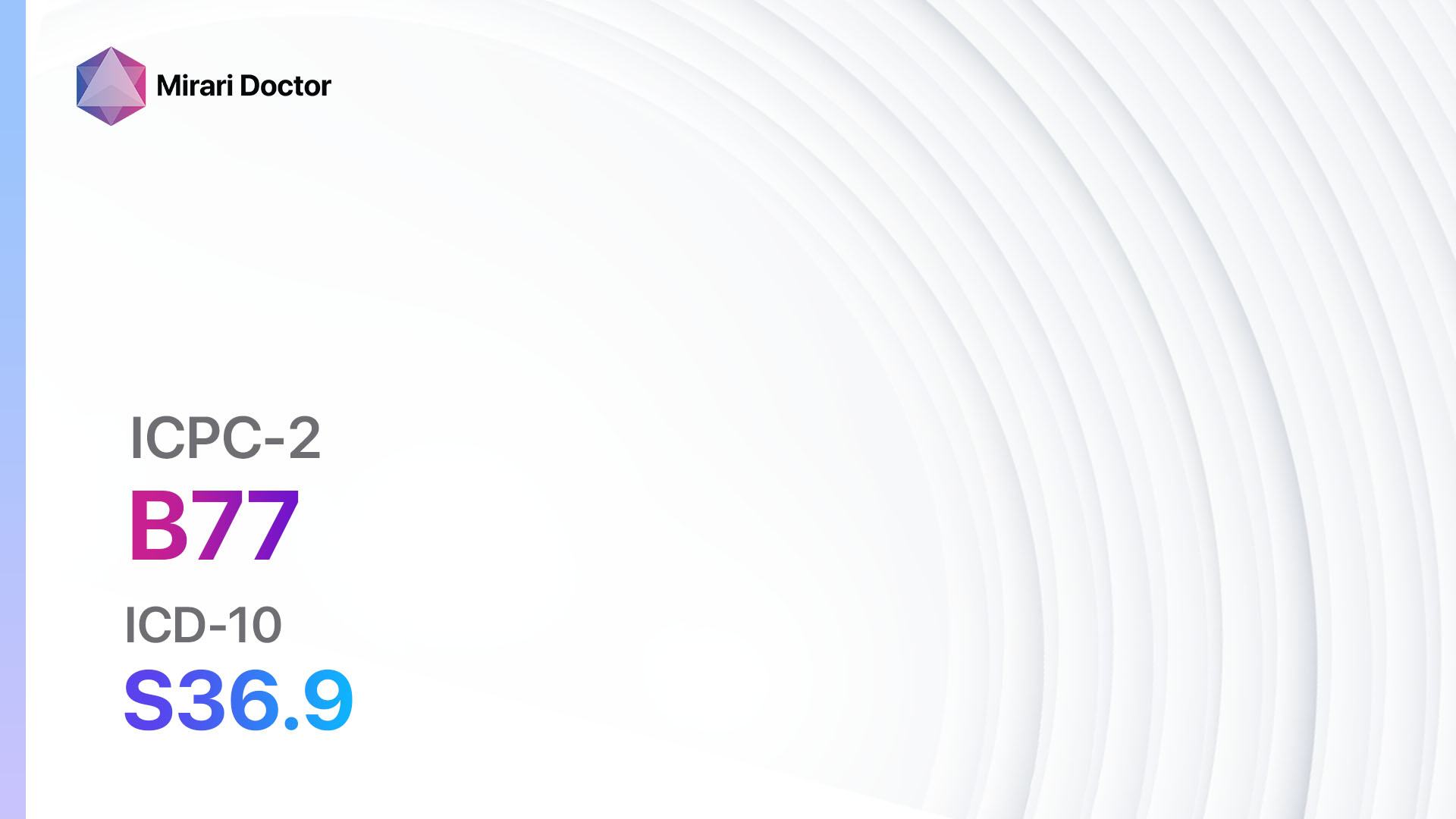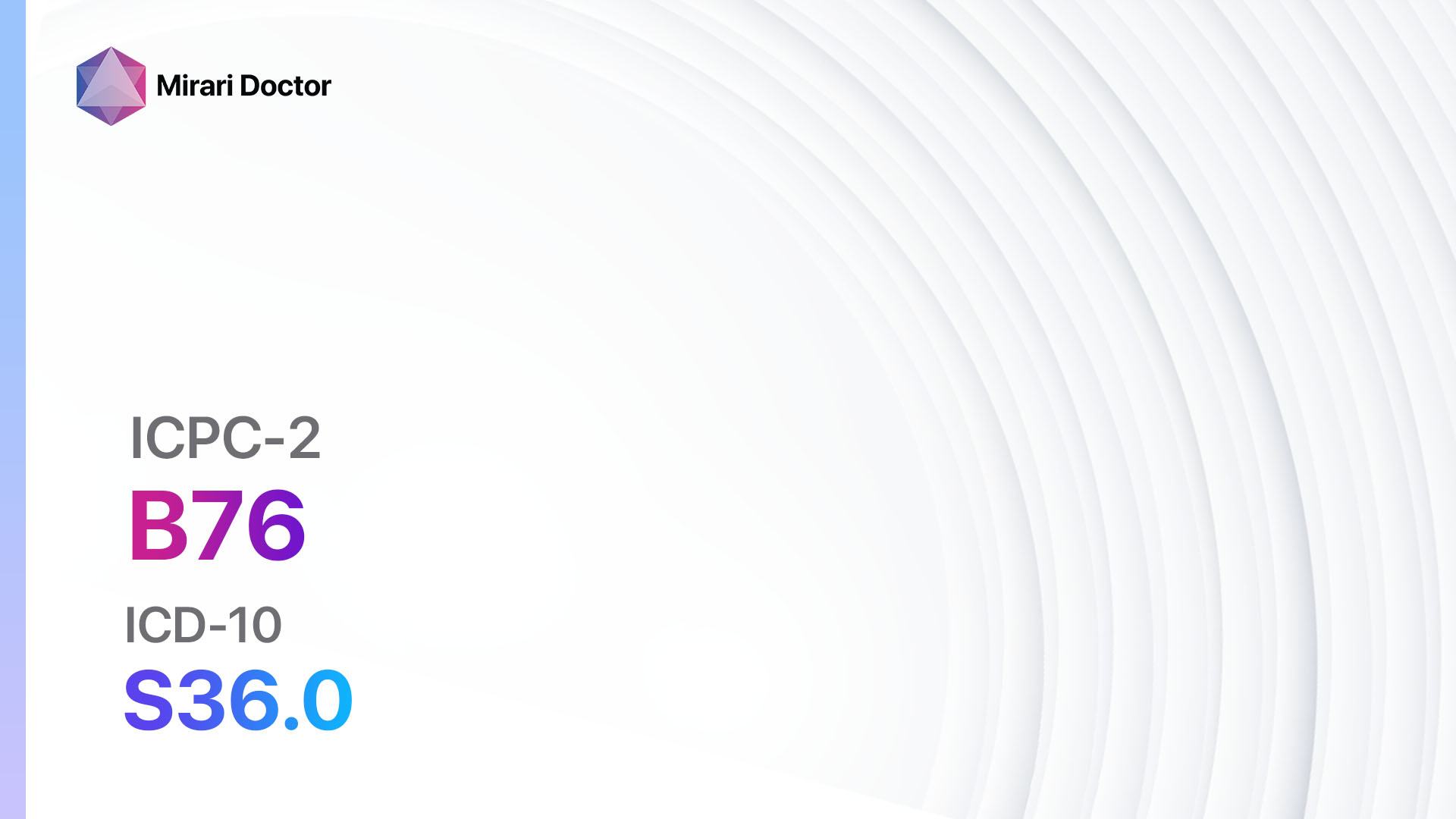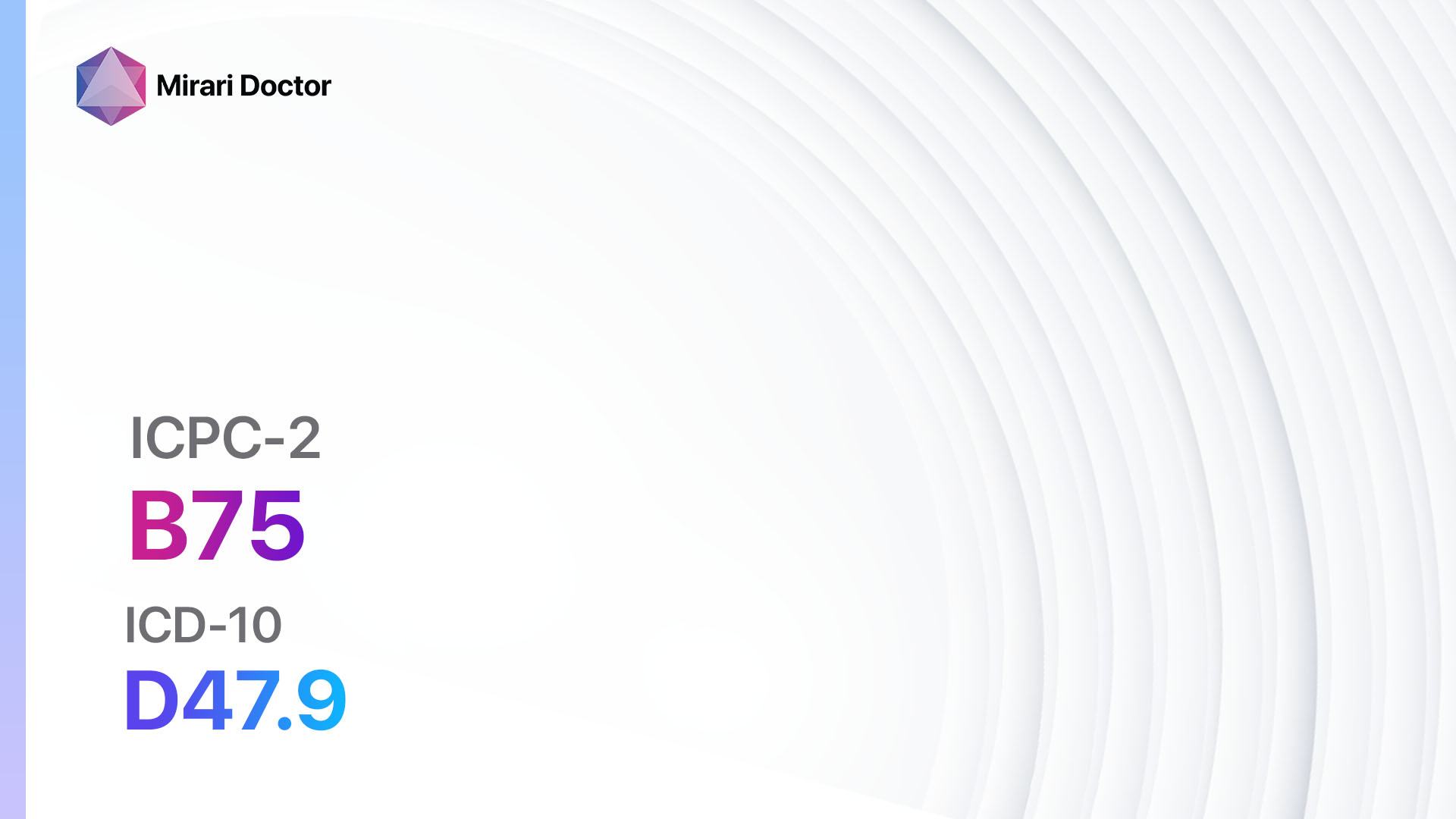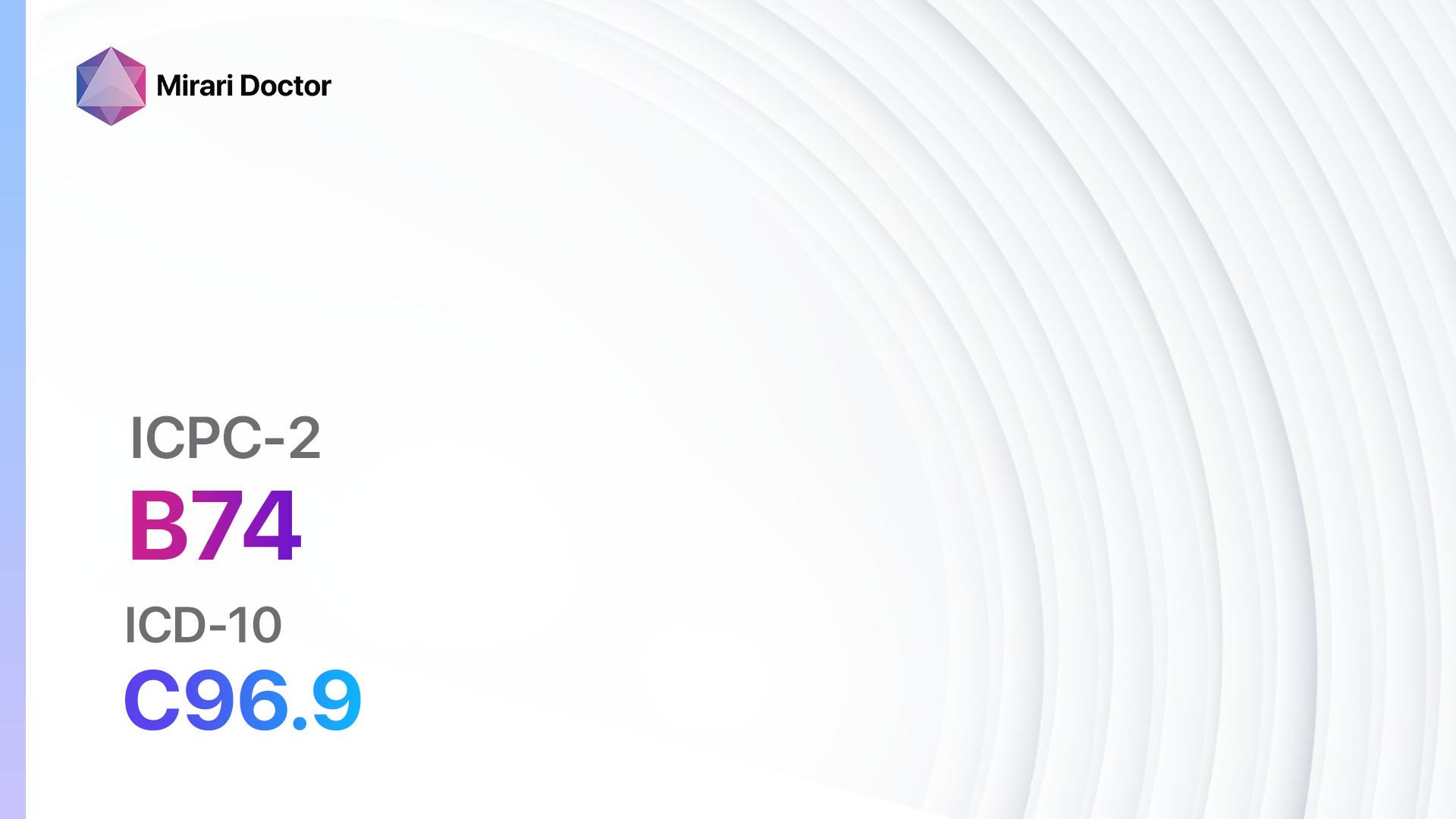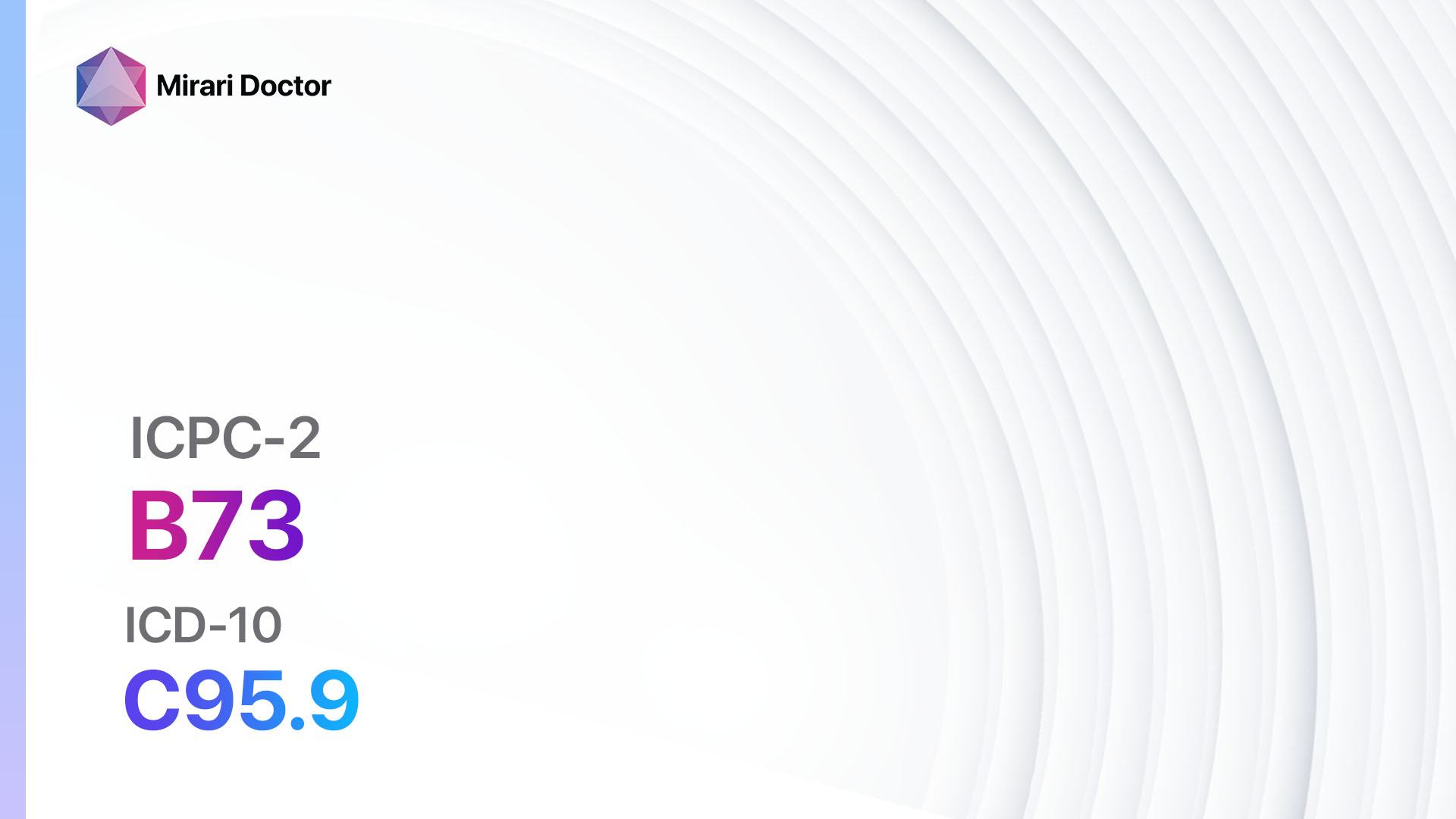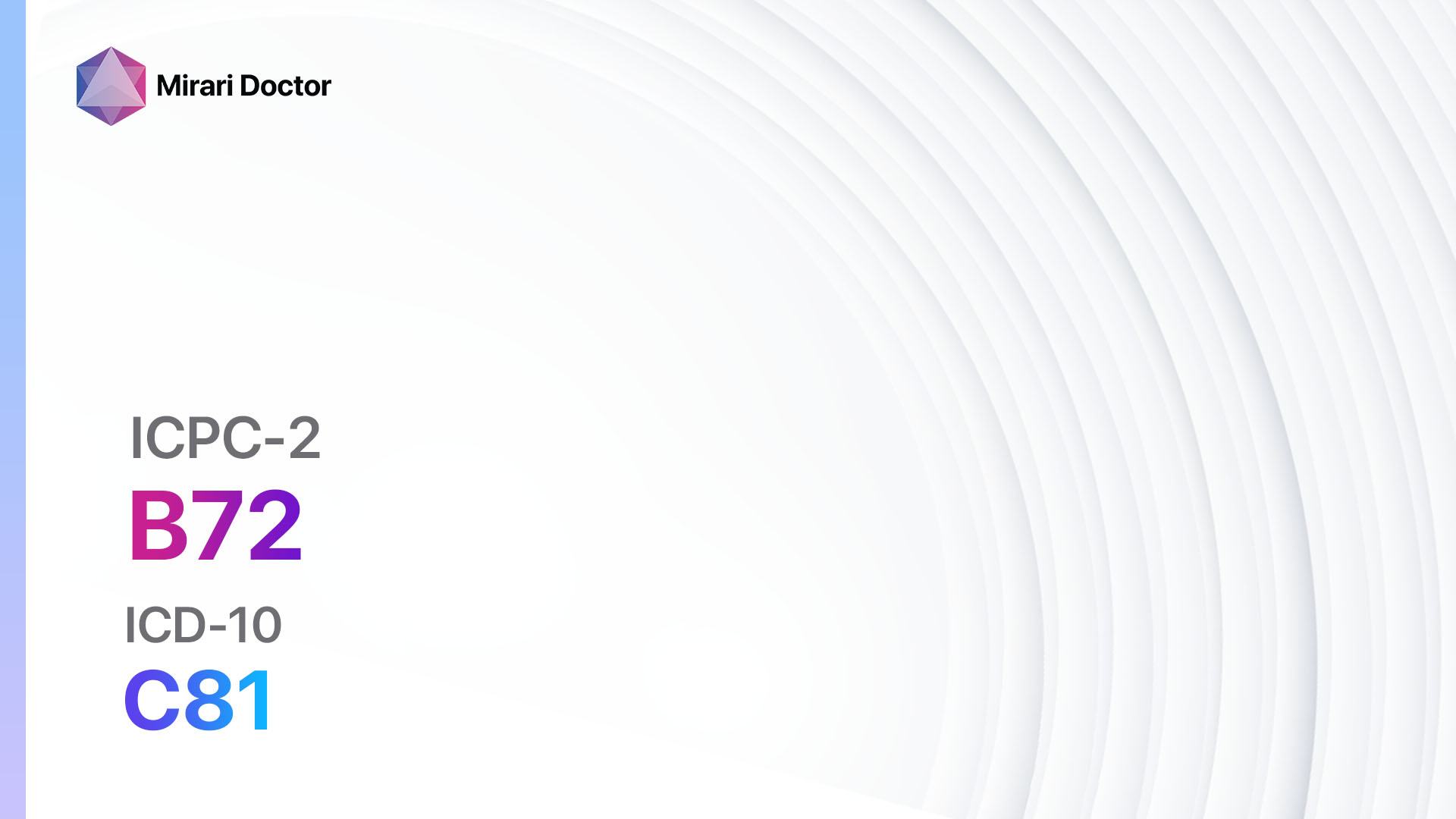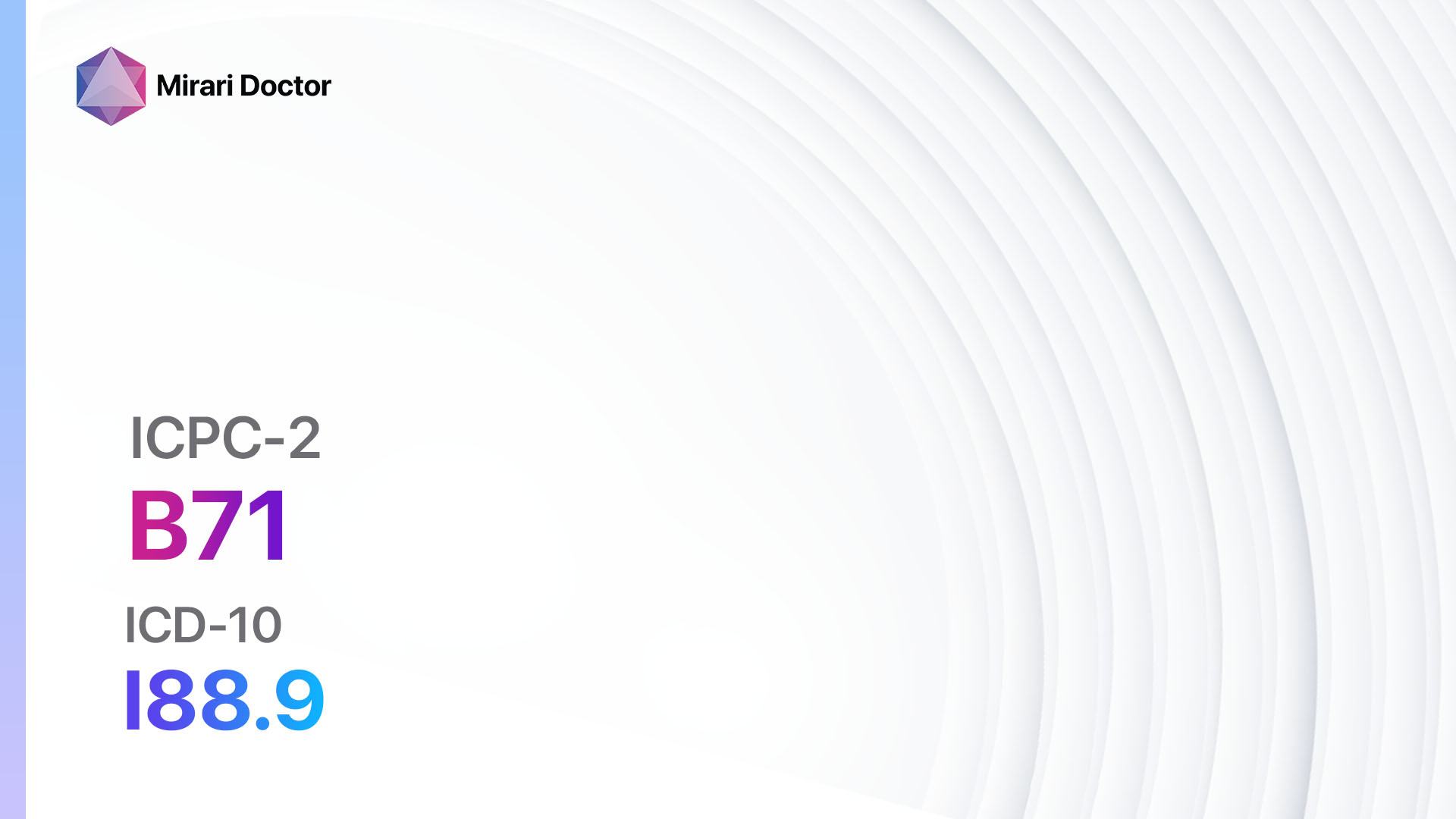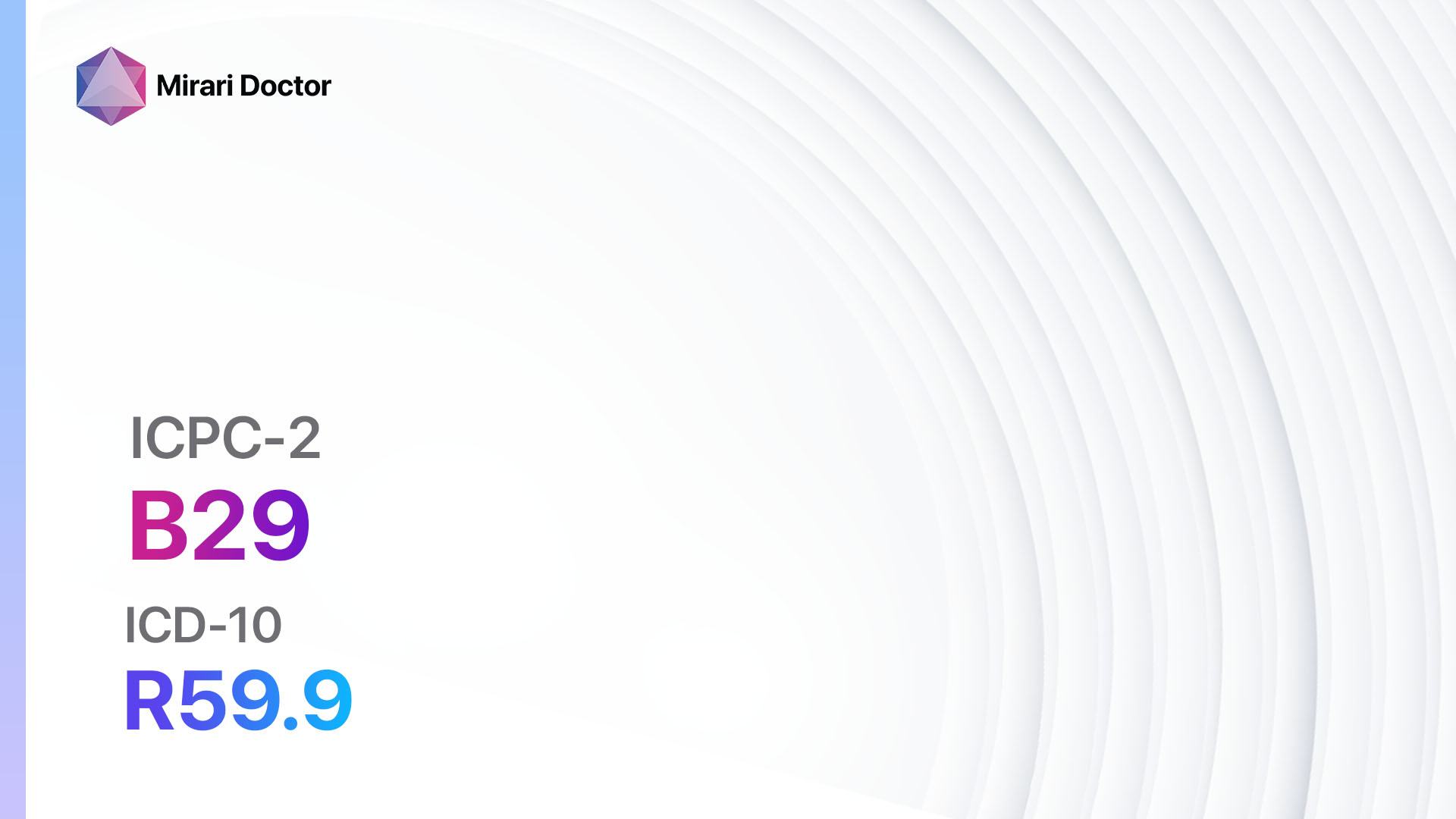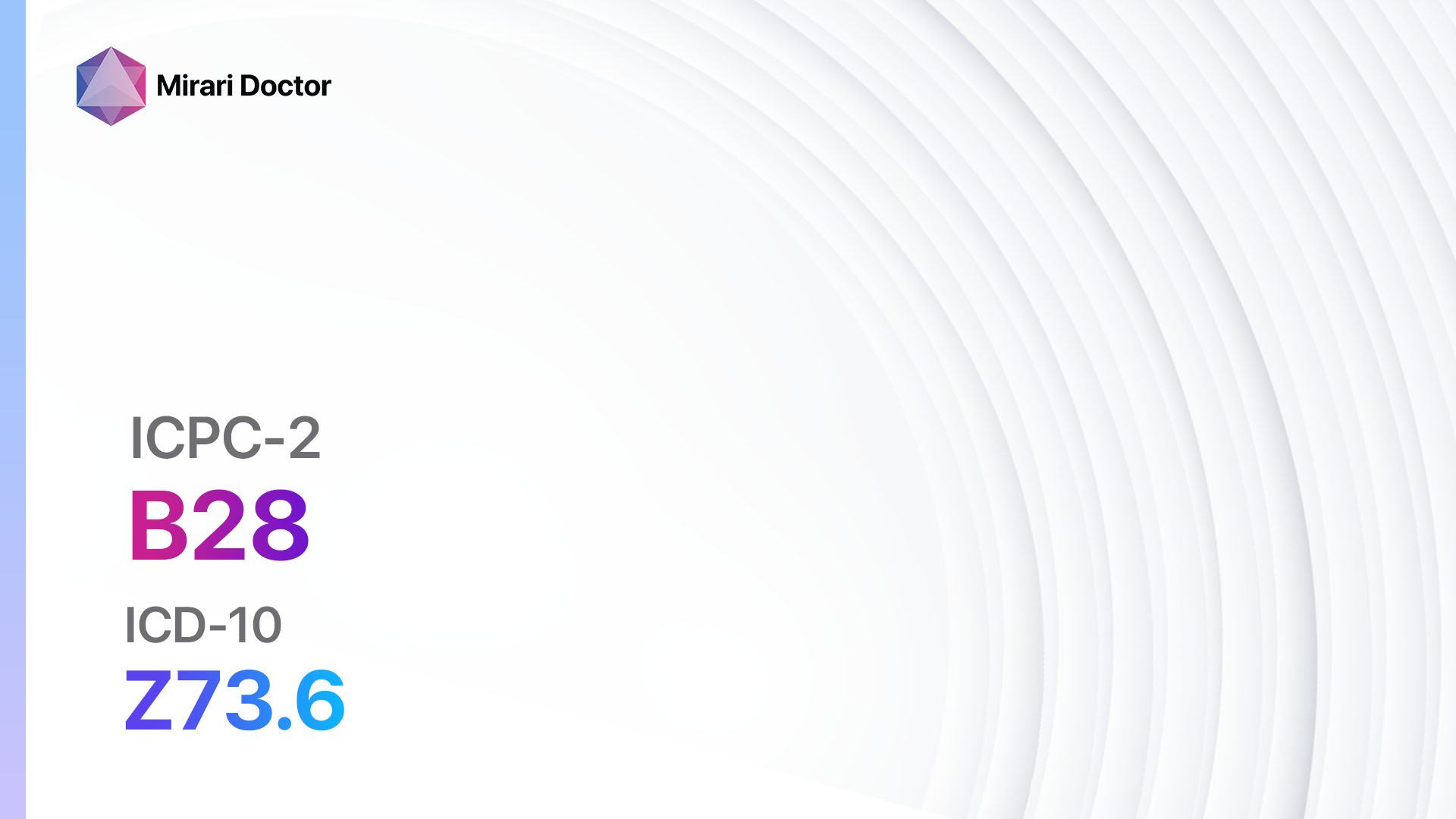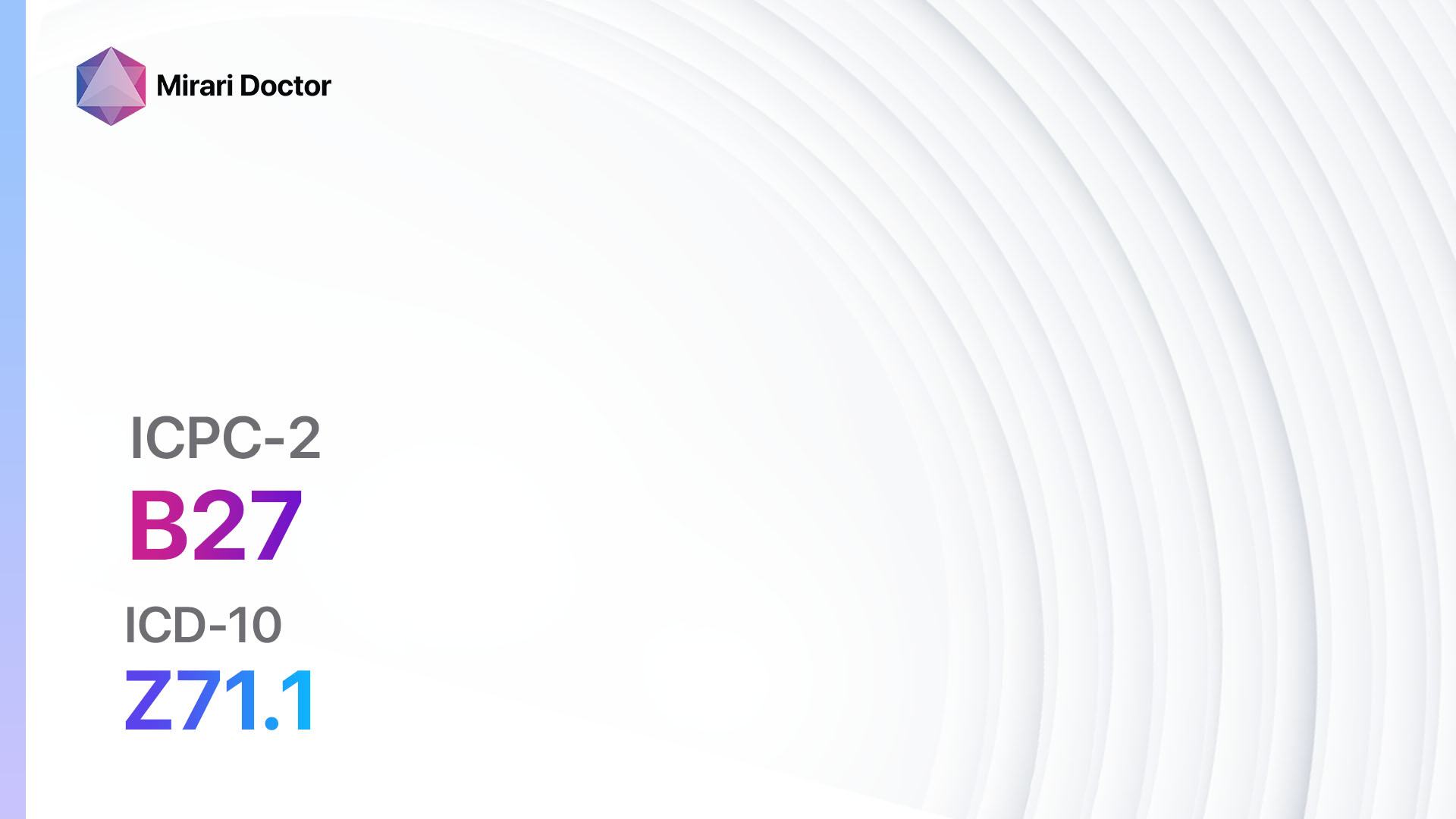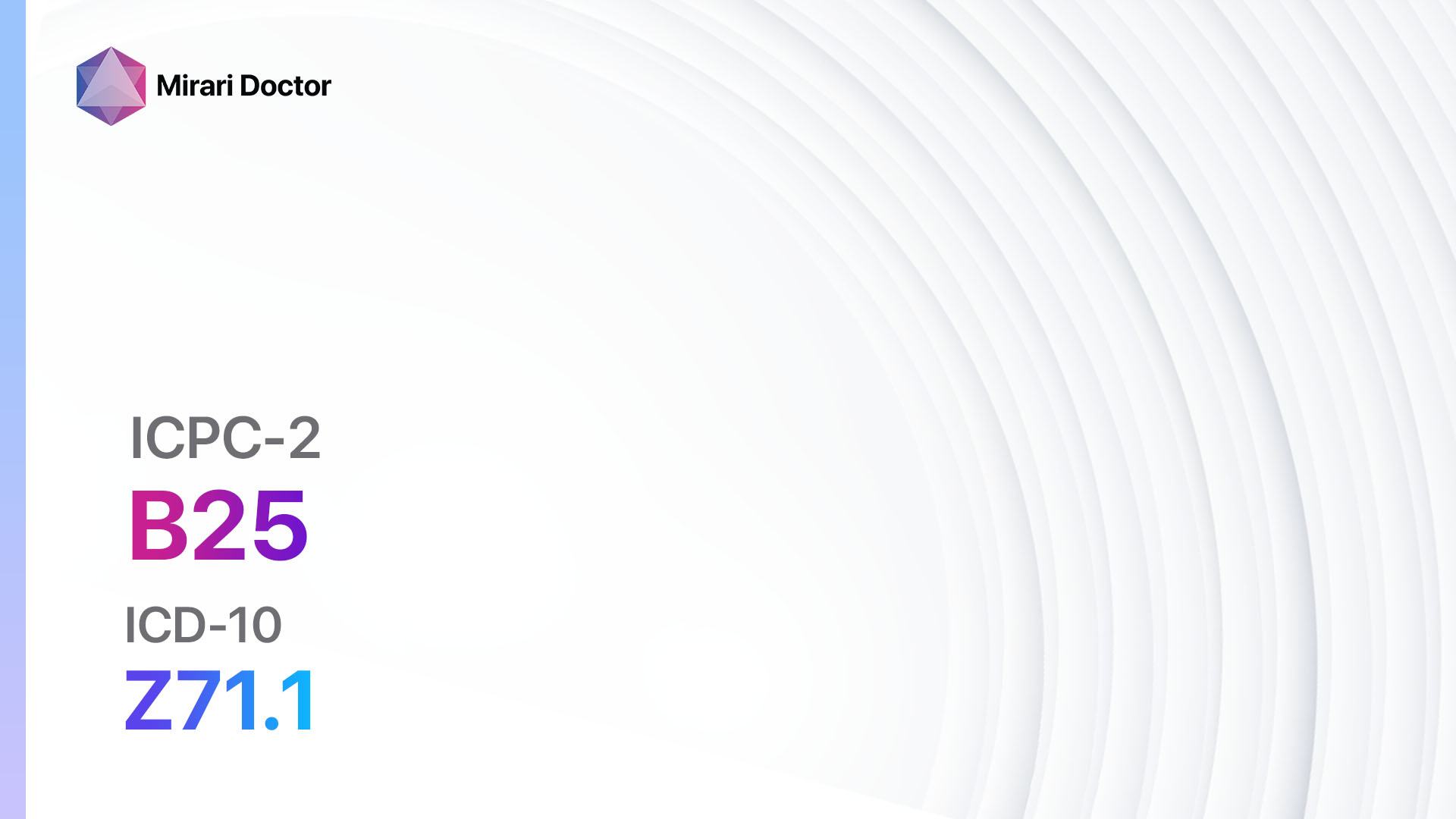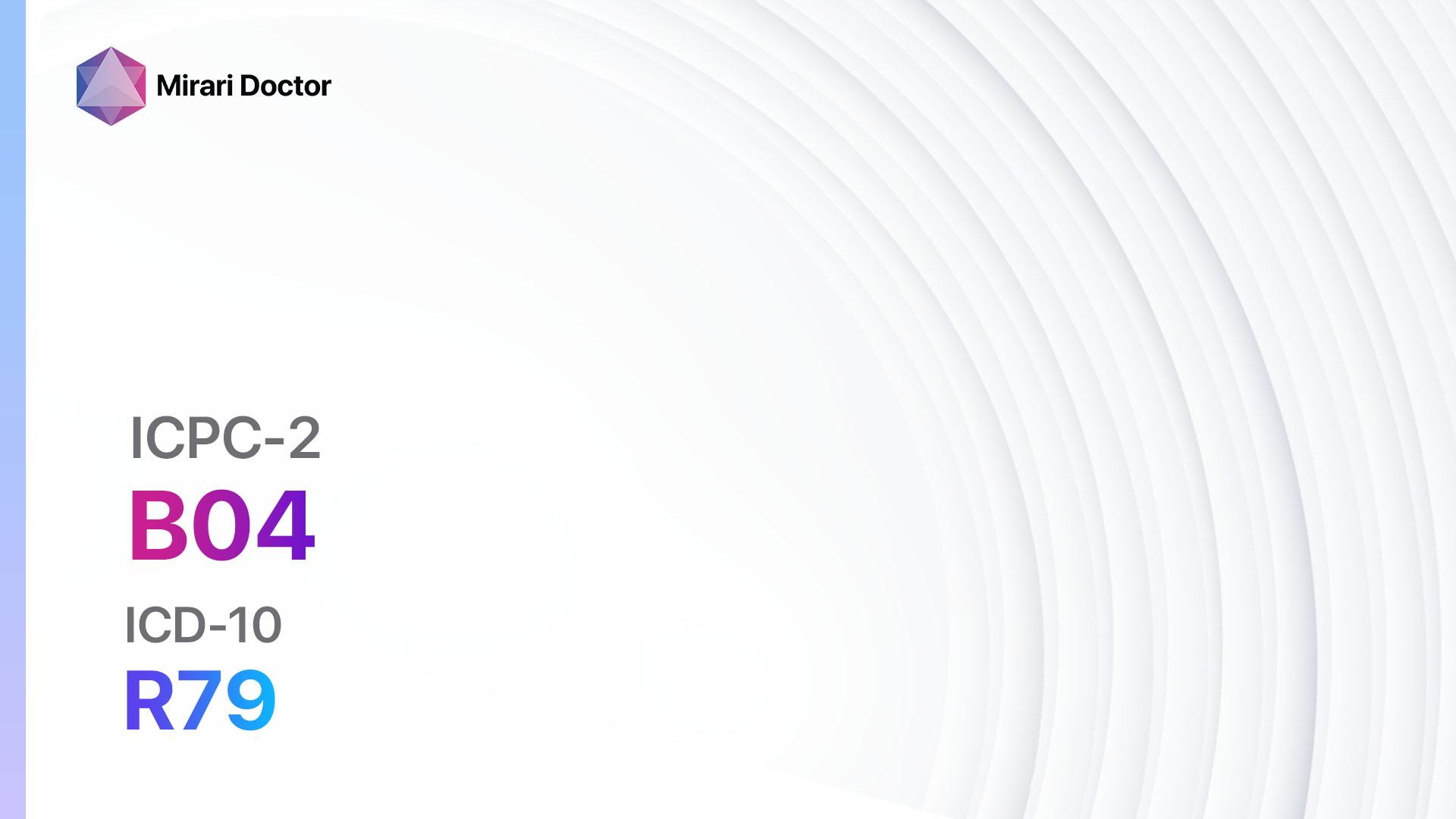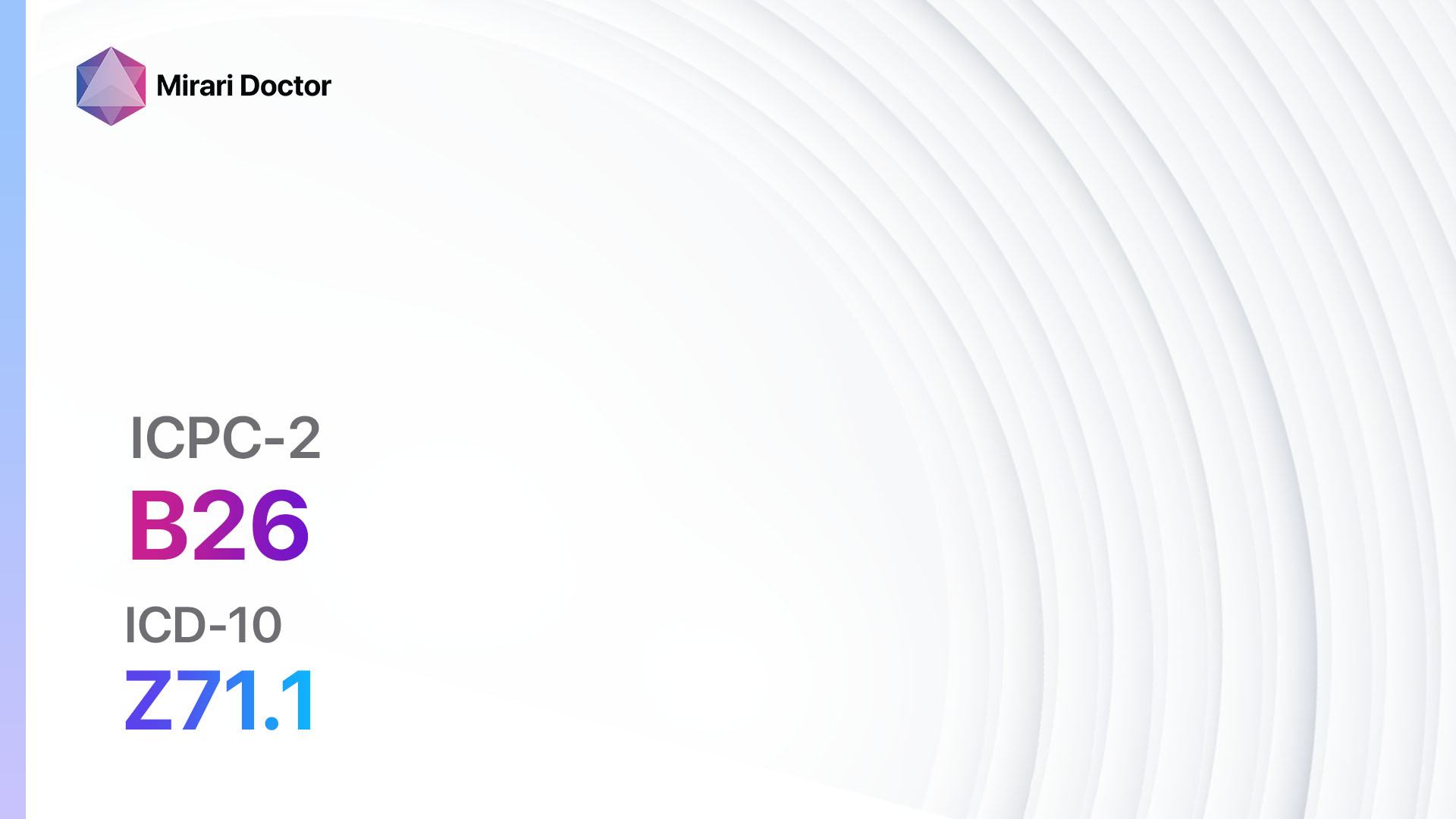
Introduction
Fear of cancer, specifically blood or lymph cancer, can be a distressing experience for individuals. This guide aims to provide a comprehensive overview of the condition, its symptoms, causes, diagnostic steps, possible interventions, and lifestyle modifications. By understanding the disease and available treatment options, patients can make informed decisions and alleviate their fears.
Codes
- ICPC-2 Code: B26 Fear cancer blood/lymph
- ICD-10 Code: Z71.1 Person with feared complaint in whom no diagnosis is made[1]
Symptoms
- Unexplained weight loss[2]
- Fatigue and weakness[3]
- Frequent infections[4]
- Easy bruising or bleeding[5]
- Enlarged lymph nodes[6]
- Night sweats[7]
- Bone pain[8]
- Shortness of breath[9]
- Abdominal pain or swelling[10]
Causes
- Genetic factors
- Exposure to certain chemicals or radiation
- Viral infections (e.g., Epstein-Barr virus, human T-cell leukemia virus)
- Immune system disorders
- Family history of blood or lymph cancer
Diagnostic Steps
Medical History
- Gather information about the patient’s risk factors, such as family history, exposure to toxins, or previous radiation therapy.
- Assess the presence and duration of symptoms.
- Inquire about any medical conditions or medications that may increase the risk of blood or lymph cancer.
Physical Examination
- Palpate lymph nodes for enlargement or tenderness.
- Examine the abdomen for any signs of organ enlargement.
- Check for signs of anemia or bleeding.
Laboratory Tests
- Complete blood count (CBC): To assess the levels of red blood cells, white blood cells, and platelets.
- Blood chemistry panel: To evaluate organ function and detect any abnormalities.
- Peripheral blood smear: To examine the morphology of blood cells.
- Bone marrow biopsy: To analyze the cells in the bone marrow for any abnormalities.
- Flow cytometry: To identify specific markers on the surface of blood cells.
- Genetic testing: To detect any genetic mutations associated with blood or lymph cancer.
Diagnostic Imaging
- X-rays: To visualize the bones and detect any abnormalities.
- Ultrasound: To assess the size and structure of organs, lymph nodes, or masses.
- CT scan: To obtain detailed cross-sectional images of the body.
- MRI: To provide high-resolution images of soft tissues and organs.
- PET scan: To identify areas of increased metabolic activity, which may indicate cancerous cells.
Other Tests
- Lymph node biopsy: To obtain a sample of lymph node tissue for further analysis.
- Immunohistochemistry: To determine the presence of specific proteins on cancer cells.
- Cytogenetic analysis: To examine the chromosomes for any abnormalities.
- Lumbar puncture: To collect cerebrospinal fluid for analysis in cases of suspected central nervous system involvement.
Follow-up and Patient Education
- Schedule regular follow-up appointments to monitor the patient’s condition and response to treatment.
- Provide education and support to help patients cope with their fears and manage any treatment-related side effects.
- Encourage open communication and address any concerns or questions.
Possible Interventions
Traditional Interventions
Medications:
Top 5 drugs for Fear cancer blood/lymph:
- Chemotherapy (e.g., Cyclophosphamide, Doxorubicin, Vincristine):
- Cost: Varies depending on the specific drugs and treatment regimen.
- Contraindications: Severe bone marrow suppression, active infections.
- Side effects: Nausea, hair loss, fatigue.
- Severe side effects: Bone marrow suppression, cardiac toxicity.
- Drug interactions: Many potential drug interactions, consult with healthcare provider.
- Warning: Regular blood tests required to monitor blood cell counts and organ function.
- Targeted therapy (e.g., Rituximab, Imatinib):
- Cost: Varies depending on the specific drugs and treatment regimen.
- Contraindications: Hypersensitivity to the drug.
- Side effects: Infusion reactions, fatigue, rash.
- Severe side effects: Severe allergic reactions, liver toxicity.
- Drug interactions: Many potential drug interactions, consult with healthcare provider.
- Warning: Regular monitoring of organ function and blood cell counts required.
- Immunotherapy (e.g., Pembrolizumab, Nivolumab):
- Cost: Varies depending on the specific drugs and treatment regimen.
- Contraindications: Severe autoimmune diseases, active infections.
- Side effects: Fatigue, skin rash, diarrhea.
- Severe side effects: Severe immune-related adverse events, organ toxicity.
- Drug interactions: Many potential drug interactions, consult with healthcare provider.
- Warning: Regular monitoring of organ function and immune-related adverse events required.
- Radiation therapy:
- Cost: Varies depending on the specific treatment plan and duration.
- Contraindications: Pregnancy, certain genetic conditions.
- Side effects: Fatigue, skin changes, nausea.
- Severe side effects: Radiation-induced fibrosis, secondary cancers.
- Drug interactions: None.
- Warning: Regular monitoring of treatment response and potential long-term side effects required.
- Hormone therapy (e.g., Tamoxifen, Leuprolide):
- Cost: Varies depending on the specific drugs and treatment regimen.
- Contraindications: Pregnancy, certain hormone-sensitive conditions.
- Side effects: Hot flashes, mood changes, weight gain.
- Severe side effects: Blood clots, endometrial cancer.
- Drug interactions: Many potential drug interactions, consult with healthcare provider.
- Warning: Regular monitoring of treatment response and potential side effects required.
Alternative Drugs:
- Herbal supplements: Some herbal supplements, such as turmeric or green tea extract, may have potential benefits in supporting the immune system. Cost: Varies depending on the specific supplement.
- Vitamin D: Adequate vitamin D levels have been associated with a reduced risk of certain cancers. Cost: Varies depending on the specific supplement.
- Melatonin: May have antioxidant and anti-inflammatory effects, potentially supporting the immune system. Cost: Varies depending on the specific supplement.
- Mistletoe extract: Used in some complementary cancer treatments, mistletoe extract may have immune-stimulating properties. Cost: Varies depending on the specific product.
Surgical Procedures:
- Biopsy: Removal of a sample of tissue for further analysis. Cost: Varies depending on the location and complexity of the biopsy.
- Lymph node dissection: Surgical removal of lymph nodes for staging or treatment purposes. Cost: Varies depending on the extent of the procedure.
- Bone marrow transplant: Replacement of diseased bone marrow with healthy stem cells. Cost: $100,000 to $300,000.
Alternative Interventions
- Acupuncture: May help alleviate treatment-related side effects and improve overall well-being. Cost: $60-$120 per session.
- Meditation: Can reduce stress and improve quality of life. Cost: Free to minimal cost.
- Yoga: Combines physical movement, breathing exercises, and meditation to promote relaxation and reduce anxiety. Cost: Varies depending on the location and instructor.
- Massage therapy: Can help reduce stress, improve circulation, and relieve muscle tension. Cost: $50-$100 per session.
- Mind-body techniques: Includes practices such as guided imagery, relaxation exercises, and biofeedback. Cost: Varies depending on the specific technique and practitioner.
Lifestyle Interventions
- Healthy diet: Emphasize a balanced diet rich in fruits, vegetables, whole grains, and lean proteins. Cost: Varies depending on individual food choices.
- Regular exercise: Engage in moderate-intensity exercise for at least 150 minutes per week. Cost: Free to minimal cost.
- Stress management: Practice techniques such as deep breathing, meditation, or mindfulness to reduce stress. Cost: Varies depending on the specific practice.
- Adequate sleep: Aim for 7-9 hours of quality sleep per night. Cost: Varies depending on individual sleep habits and preferences.
- Avoidance of tobacco and excessive alcohol: Limit or eliminate tobacco use and moderate alcohol consumption. Cost: Varies depending on individual habits.
It is important to note that the cost ranges provided are approximate and may vary depending on the location and availability of the interventions. Patients should consult with their healthcare provider to determine the most suitable interventions and their associated costs.
Mirari Cold Plasma Alternative Intervention
Understanding Mirari Cold Plasma
- Safe and Non-Invasive Treatment:Mirari Cold Plasma is a safe and non-invasive treatment option for various skin conditions. It does not require incisions, minimizing the risk of scarring, bleeding, or tissue damage.
- Efficient Extraction of Foreign Bodies:Mirari Cold Plasma facilitates the removal of foreign bodies from the skin by degrading and dissociating organic matter, allowing easier access and extraction.
- Pain Reduction and Comfort:Mirari Cold Plasma has a local analgesic effect, providing pain relief during the treatment, making it more comfortable for the patient.
- Reduced Risk of Infection:Mirari Cold Plasma has antimicrobial properties, effectively killing bacteria and reducing the risk of infection.
- Accelerated Healing and Minimal Scarring: Mirari Cold Plasma stimulates wound healing and tissue regeneration, reducing healing time and minimizing the formation of scars.
Mirari Cold Plasma Prescription
Video instructions for using Mirari Cold Plasma Device – B26 Fear cancer blood/lymph (ICD-10:Z71.1)
| Mild | Moderate | Severe |
| Mode setting: 7 (Immunotherapy) Location: 1 (Sacrum) Morning: 15 minutes, Evening: 15 minutes | Mode setting: 7 (Immunotherapy) Location: 1 (Sacrum) Morning: 30 minutes, Lunch: 30 minutes, Evening: 30 minutes | Mode setting: 7 (Immunotherapy) Location: 1 (Sacrum) Morning: 30 minutes, Lunch: 30 minutes, Evening: 30 minutes |
| Mode setting: 7 (Immunotherapy) Location: 4 (Heart, Bile & Pancreas) Morning: 15 minutes, Evening: 15 minutes | Mode setting: 7 (Immunotherapy) Location: 4 (Heart, Bile & Pancreas) Morning: 30 minutes, Lunch: 30 minutes, Evening: 30 minutes | Mode setting: 7 (Immunotherapy) Location: 4 (Heart, Bile & Pancreas) Morning: 30 minutes, Lunch: 30 minutes, Evening: 30 minutes |
| Mode setting: 7 (Immunotherapy) Location: 7 (Neuro system & ENT) Morning: 15 minutes, Evening: 15 minutes | Mode setting: 7 (Immunotherapy) Location: 7 (Neuro system & ENT) Morning: 30 minutes, Lunch: 30 minutes, Evening: 30 minutes | Mode setting: 7 (Immunotherapy) Location: 7 (Neuro system & ENT) Morning: 30 minutes, Lunch: 30 minutes, Evening: 30 minutes |
| Total Morning: 45 minutes approx. $7.50 USD, Evening: 45 minutes approx. $7.50 USD | Total Morning: 90 minutes approx. $15 USD, Lunch: 90 minutes approx. $15 USD, Evening: 90 minutes approx. $15 USD | Total Morning: 90 minutes approx. $15 USD, Lunch: 90 minutes approx. $15 USD, Evening: 90 minutes approx. $15 USD |
| Usual treatment for 7-60 days approx. $105 USD – $900 USD | Usual treatment for 6-8 weeks approx. $1,890 USD – $2,520 USD | Usual treatment for 3-6 months approx. $4,050 USD – $8,100 USD |
 |
|
Use the Mirari Cold Plasma device to treat Fear cancer blood/lymph effectively.
WARNING: MIRARI COLD PLASMA IS DESIGNED FOR THE HUMAN BODY WITHOUT ANY ARTIFICIAL OR THIRD PARTY PRODUCTS. USE OF OTHER PRODUCTS IN COMBINATION WITH MIRARI COLD PLASMA MAY CAUSE UNPREDICTABLE EFFECTS, HARM OR INJURY. PLEASE CONSULT A MEDICAL PROFESSIONAL BEFORE COMBINING ANY OTHER PRODUCTS WITH USE OF MIRARI.
Step 1: Cleanse the Skin
- Start by cleaning the affected area of the skin with a gentle cleanser or mild soap and water. Gently pat the area dry with a clean towel.
Step 2: Prepare the Mirari Cold Plasma device
- Ensure that the Mirari Cold Plasma device is fully charged or has fresh batteries as per the manufacturer’s instructions. Make sure the device is clean and in good working condition.
- Switch on the Mirari device using the power button or by following the specific instructions provided with the device.
- Some Mirari devices may have adjustable settings for intensity or treatment duration. Follow the manufacturer’s instructions to select the appropriate settings based on your needs and the recommended guidelines.
Step 3: Apply the Device
- Place the Mirari device in direct contact with the affected area of the skin. Gently glide or hold the device over the skin surface, ensuring even coverage of the area experiencing.
- Slowly move the Mirari device in a circular motion or follow a specific pattern as indicated in the user manual. This helps ensure thorough treatment coverage.
Step 4: Monitor and Assess:
- Keep track of your progress and evaluate the effectiveness of the Mirari device in managing your Fear cancer blood/lymph. If you have any concerns or notice any adverse reactions, consult with your health care professional.
Note
This guide is for informational purposes only and should not replace the advice of a medical professional. Always consult with your healthcare provider or a qualified medical professional for personal advice, diagnosis, or treatment. Do not solely rely on the information presented here for decisions about your health. Use of this information is at your own risk. The authors of this guide, nor any associated entities or platforms, are not responsible for any potential adverse effects or outcomes based on the content.
Mirari Cold Plasma System Disclaimer
- Purpose: The Mirari Cold Plasma System is a Class 2 medical device designed for use by trained healthcare professionals. It is registered for use in Thailand and Vietnam. It is not intended for use outside of these locations.
- Informational Use: The content and information provided with the device are for educational and informational purposes only. They are not a substitute for professional medical advice or care.
- Variable Outcomes: While the device is approved for specific uses, individual outcomes can differ. We do not assert or guarantee specific medical outcomes.
- Consultation: Prior to utilizing the device or making decisions based on its content, it is essential to consult with a Certified Mirari Tele-Therapist and your medical healthcare provider regarding specific protocols.
- Liability: By using this device, users are acknowledging and accepting all potential risks. Neither the manufacturer nor the distributor will be held accountable for any adverse reactions, injuries, or damages stemming from its use.
- Geographical Availability: This device has received approval for designated purposes by the Thai and Vietnam FDA. As of now, outside of Thailand and Vietnam, the Mirari Cold Plasma System is not available for purchase or use.
References
- ICD-10 Code for Person with feared health complaint in whom no diagnosis is made Z71.1. (n.d.). AAPC.//www.aapc.com/codes/icd-10-codes/Z71.1
- Lymphoma – Symptoms and causes. (2021, June 5). Mayo Clinic.//www.mayoclinic.org/diseases-conditions/lymphoma/symptoms-causes/syc-20352638
- Tests for Non-Hodgkin Lymphoma. (n.d.). American Cancer Society.//www.cancer.org/cancer/types/non-hodgkin-lymphoma/detection-diagnosis-staging/how-diagnosed.html
- Lymphoma – Diagnosis, Evaluation and Treatment. (n.d.). Radiologyinfo.org.//www.radiologyinfo.org/en/info/lymphoma
- Tests to diagnose non-Hodgkin lymphoma. (2019, April 25). Cancer Research UK.//www.cancerresearchuk.org/about-cancer/non-hodgkin-lymphoma/getting-diagnosed/tests-to-diagnose
- Mehnert, Anja ; Berg, Petra ; Henrich, Gerhard ; Herschbach, Peter (2009). Fear of cancer progression and cancer-related intrusive cognitions in breast cancer survivors. DOI: 10.1002/pon.1481
- Pandya, Pahini ; Orgaz, Jose L. ; Sanz‐Moreno, Victoria (2017). Modes of invasion during tumour dissemination. DOI: 10.1002/1878-0261.12019
- Matsumura, Fumio ; Hartshorne, David J. (2008). Myosin phosphatase target subunit: Many roles in cell function. DOI: 10.1016/j.bbrc.2007.12.090
- Lämmermann, Tim ; Sixt, Michael (2009). Mechanical modes of ‘amoeboid’ cell migration. DOI: 10.1016/j.ceb.2009.05.003
- Friedl, Peter ; Alexander, Stephanie (2011). Cancer Invasion and the Microenvironment: Plasticity and Reciprocity. DOI: 10.1016/j.cell.2011.11.016
Related articles
Made in USA


